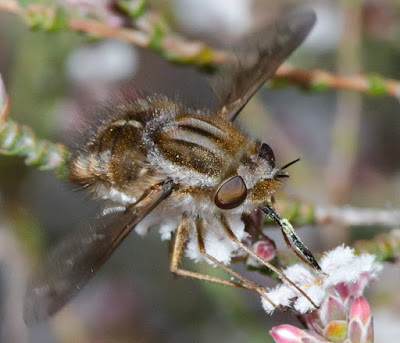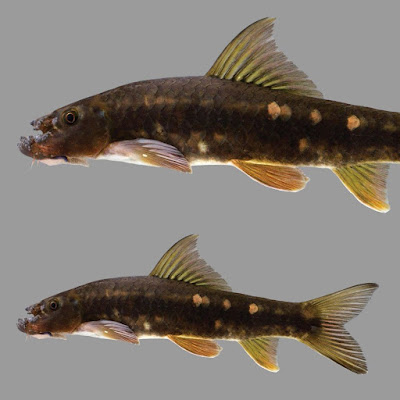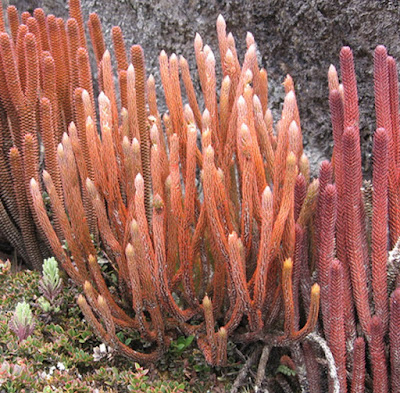[Most Recent Entries] [Calendar View]
Wednesday, December 18th, 2019
| Time | Event | ||||||
| 6:16a | [Entomology • 2019] Revision of the Australian Bee Fly Genus Sisyromyia White, 1916 (Diptera: Bombyliidae)
We review Sisyromyia White (Bombyliidae, Bombyliinae), a remarkable Australian endemic bee fly genus, which includes 11 species, including six species we describe as new here: Sisyromyia albisquama sp. nov., Sisyromyia angustivitta sp. nov., Sisyromyia elongata sp. nov., Sisyromyia maculipennis sp. nov., Sisyromyia umbra sp. nov., Sisyromyia vittata sp. nov. The genus can be easily distinguished from other Australian genera in the subfamily by having a one-segmented antennal flagellum, subapex of flagellum with some long hairs; a pale median stripe present on the abdomen consisting of dense, decumbent short scales, cell r5 open; cell br nearly as long as cell bm, crossvein m-m located on base of cell dm; crossvein m-m long, nearly as long as crossvein r-m. We also recognized one new synonym, and propose a new combination for Sisyromyia binghi Evenhuis. A key to species of Sisyromyia is provided, and we extensively illustrate their internal and external morphology. Keywords: Diptera, Australia, Bombyliidae, Acrophthalmydini, new species, new combination | ||||||
| 8:16a | [Ichthyology • 2019] Garra surinbinnani • A New Species of Labeonine (Teleostei: Cyprinidae) from the Mae Khlong basin of Thailand
Garra surinbinnani, new species Diagnosis. Garra surinbinnani is distinguished from all other species of Garra by the combination of a more-or-less rectangular (viewed dorsally), bilobed proboscis on the snout (Fig. 2), a large transverse lobe separated from the rest of the snout by a deep transverse groove, 12-13 circumpeduncular scales, and 28-31 lateral-line scales.
Etymology. The specific name surinbinnani, a noun in genitive case, is the concatenated form of the chosen appellation of our friend and colleague, Mr. Amphol Tapanapunnitikul. Surin Binnan (สุริน บินนาน) was director of the Foundation of Western Forest Complex Conservation and a leading figure in efforts to protect natural areas in Thailand. Distribution and habitat. Garra surinbinnani appears to be endemic to the Mae Khlong basin in western Thailand (Fig. 6). It occurs sympatrically with G. fuliginosa in fast rocky riffles in streams throughout the basin and with G. cambodgiensis and G. fluviatilis in the Khwae Noi, the large western tributary of the Mae Khlong basin. Lawrence M. Page, Brandon C. Ray, Sampan Tongnunui, David A. Boyd and Zachary S. Randall. 2019. Garra surinbinnani, A New Species of Labeonine from the Mae Khlong basin of Thailand (Teleostei: Cyprinidae). Ichthyological Exploration of Freshwaters. IEF-1117. DOI: 10.23788/IEF-1117 ‘Netherworldly’ freshwater fish named for Thai conservation visionary bit.ly/38HECIp via @FloridaMuseum @EurekAlert | ||||||
| 9:36a | [Botany • 2019] Synopsis of the Genus Phlegmariurus (Lycopodiaceae) in Colombia
Abstract This article presents the results of a study of a large material of Colombian Lycopodiaceae, describing 75 species of the genus Phlegmariurus, some of them subdivided into several varieties. Their nomenclature, distribution and habitats are indicated, and problems of species delimitation and infraspecific variation are discussed. All species are illustrated, and studied specimens are cited. An attempt has been made to group the species, mainly following the clades of recent molecular studies. The following taxa are described as new to science: Phlegmariurus cocuyensis, P. cruentus var. exilis, P. cruentus var. illimitatus, P. idroboi, and P. josesantae. Keywords: Lycopodiaceae, Phlegmariurus, Colombia, Pteridophytes Benjamin Øllgaard [B.Øllg.]. 2019. Synopsis of the Genus Phlegmariurus (Lycopodiaceae) in Colombia. Phytotaxa. 426(1); 1-105. DOI: 10.11646/phytotaxa.426.1.1 |
| << Previous Day |
2019/12/18 [Calendar] |
Next Day >> |










